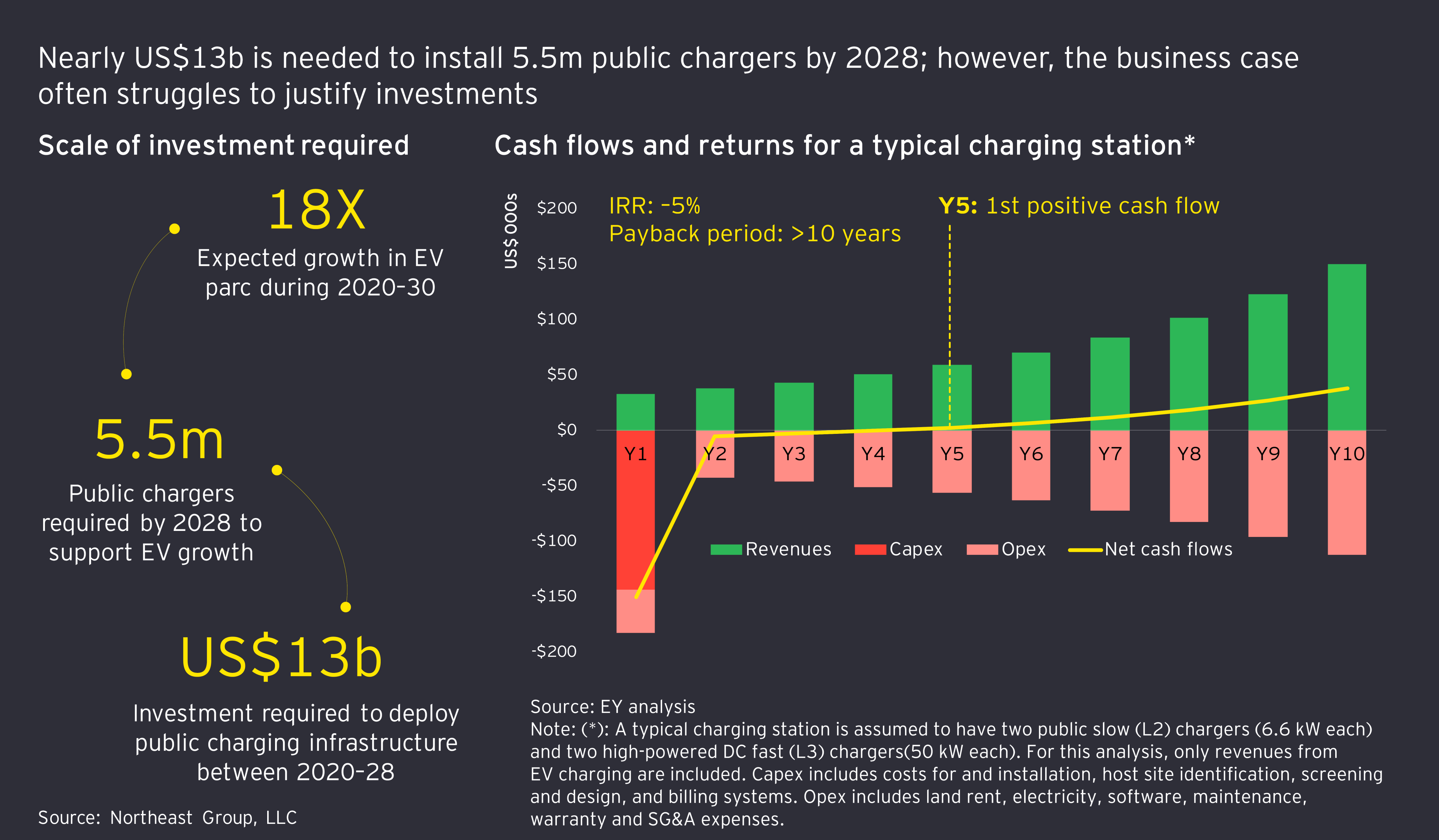As the capital invested in the creation of vast EV charging networks is not expected to yield returns quickly, it is imperative for the established charging stations to have as high capacity utilization as possible – to better the (currently) weak business case. The margin on revenue from an EV charging station increases in a $70:1% ratio with the percentage increase in the station’s capacity utilization (ISGF, 2018). The idea that public funds might be invested by governments towards such ends – heightens the need for achieving the best possible capacity utilization for each charging station.
Pre-empting charging station utilization through spatial data
For establishing EV charging stations, it is important to understand which locations are best fit for maximizing capacity utilization of the charging assets. Therefore, a location assessment of all possible charging sites (in an area) is required. Inherently, locational assessment is a data-driven practice, and spatially referenced geodata is key for its purposes.
Some spatially referenced datasets can be highly accurate proxy indicators of envisaged charging station utilization and existing infrastructural capacity to support charging station establishment. This is true from both a supply as well as a demand perspective. From a supply perspective, parameters such as land availability, power infrastructure saturation, cost of power procurement, and others, are important. Datasets pertaining to the same will be required for performing a supply-side driven location assessment. On the other hand, demand-related parameters such as vehicular traffic at different locations, footfall densities and point-of-interest intensity, are crucial for estimating the charging demand potential (or charging capacity utilization) of any proposed charging station.
Planning EV charging stations
In order to plan for EV charging stations using the datasets mentioned above, it is worthwhile to employ tools and techniques that can seamlessly merge the different datasets together and draw actionable insights for the stakeholders in the EV charging ecosystem. Geographical information systems (GIS) offer a unique and easy-to-use package of all such tools and techniques which can help stakeholders to identify the best possible locations for siting EV charging infrastructure in an area. GIS platforms are capable of using spatially referenced data, and co-analyzing them, in a bid to deliver spatial insights based on which sound infrastructure-related decisions can be made. GIS platforms find their usage in a wide variety of applications, which encompass infrastructure development and management as well. As per our analysis, data-driven, comprehensive and multi-parameter assessment of locations for establishment of EV charging stations can positively impact their capacity utilization. A few benefits are documented in the figure below.2.




